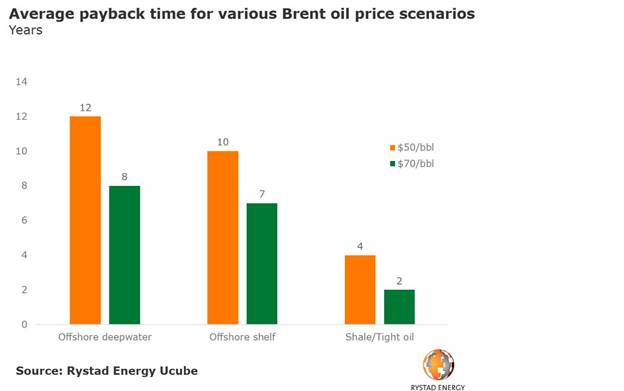In a major turnaround, North American tight oil is emerging as the second cheapest source of new oil volumes globally, just shy of the Middle East onshore market.
That is the conclusion of Rystad Energy’s latest cost of supply curve update, ranking the world’s total recoverable liquid resources by their breakeven price.

“As the majors are struggling to replace conventional liquids, a wealthy source of additional resources is tight oil,” says Espen Erlingsen, Head of Upstream Research at Rystad Energy.
Tight oil – such as onshore shale oil in the US – has witnessed an impressive turnaround over the last few years. In 2015, North American shale ranked as the second most expensive resource according to Rystad Energy’s global liquids cost curve, with an average breakeven price of $68 per barrel. The average Brent breakeven price for tight oil is now estimated at $46 per barrel, just four dollars behind the giant onshore fields in Saudi Arabia and other Middle Eastern countries.
“The North American tight oil industry has changed considerably since 2014, as it has proven to be a competitive supply source in a low price environment,” Erlingsen added. “While costs for tight oil have been reduced, the resource potential has grown considerably over the last four years.”
Rystad Energy, the independent energy research and consultancy headquartered in Norway with offices across the globe, estimates that total recoverable resources from North American tight oil has more than tripled since 2014.
For oil companies struggling to replace conventional resources after years of disappointing exploration results, tight oil simultaneously offers a base for growth, increased flexibility, and attractive returns.

Whereas offshore normally needs seven to 12 years to recover costs, tight oil typically requires only two to four years.
“Tight oil is a short cycle investment with a relatively brief lead time from the sanctioning of new wells to the start of production. This gives E&P companies the flexibility to adapt to market conditions and easily change activity levels,” Erlingsen remarked. “In the ever-changing oil price environment, this implies tight oil investment has less uncertainty compared to offshore.”

Follow us on social media: